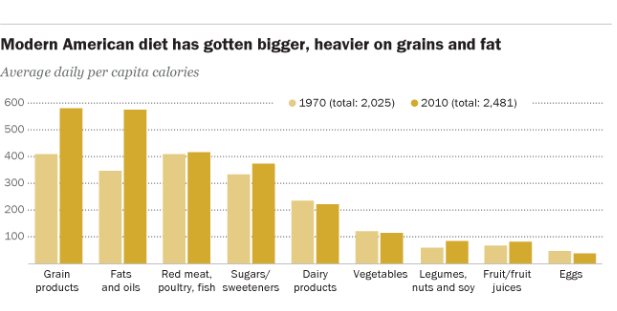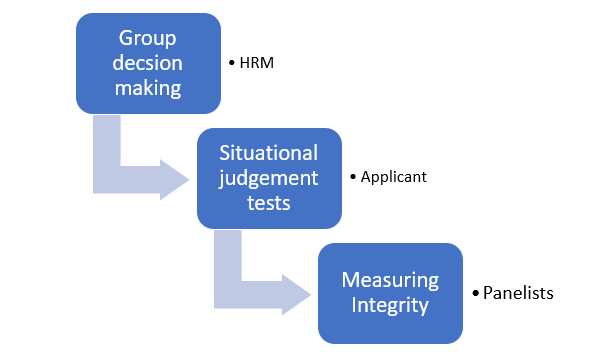Being a head of the food production in a busy hospitality establishment requires one to be competent with dynamics that may affect guest and staff experience. Fairmont Hot Springs Resort (FHSR) is a reputable hotel offering top-notch hospitality service to local and regional clients. The first dimension that can be useful in highlighting the performance index of the chef is the extent of the quality of services from food and beverage personnel. That means that the chef is responsible for the quality of all cooked dishes to match modern culinary aspects and meet customers’ demands. That goes hand-in-hand with the time taken to prepare and the safety that accompanies the food prepared from preparation, serving, and consumption.
Culinary Approach
The second dimension that can indicate how the executive chef’s work is fairing is how he/she leverages dishes depending on the target customers and season. For instance, from June to August, Canada receives many tourists who visit various parts of the country, such as the CN Tower in Toronto, Niagara Falls, and Banff National Park, among other places (Teng, 2019). During this season, an executive chef is expected to plan his menu to be an ethnic-centric one that offers specific delicacies based on country. This may include having Chinese restaurants, Indian cuisine, and European settings within the hotel. To check if there is a positive indicator, FHSR shall weigh the revenue growth rate during this period and how many clients were satisfied with their orders that were inclined to their heritages (Catano et al., 2021). It is expected that the executive chef will explore various culinary aspects for different regions as that will give exciting dishes for every type of guest.

Collaboration with Stakeholders
The third dimension that shall determine executive chefs’ performance is the collaboration they will have with other stakeholders. Food production personnel are expected to coordinate well with other divisions, such as food and beverage service, housekeeping, front office, and procurement. In this case, the chef is the guide on what should be purchased and released from the store and briefs the F&B manager on the menu for the day and in case there is a chef’s special offer. These interactions ensure that no guest is dragged regarding food quality and quantity, time management, and any other implication. Moreover, the manager must understand the abilities and skills of the employees, especially in limited time, and also make sure that the employees know that mistakes can be costly to the company (Urminsky & Goswami, 2021). Thus, the degree of association between the executive chef and other essential service delivery teams shall determine their performance.
Lack of Accountability
Food production requires someone who is aggressive in noting consumption and movement of an item from one place to another. For instance, if food production tools, cutlery, and other kitchen items are lost, it means there is a lapse in manning the control of the same. It means a hotel might breed a culture of ignorance which puts the chef and his team at a liability.
Multidimensional Model of Job Performance for Landscaping Designer
Aesthetic Value
A landscaping designer is expected to be updated on the current aesthetic elements that create a spectacular ambience in a hotel. The first measure for landscaping supervisors is to check if they have brought all staff together for operations that yield to the above expectations. If the hotel has well-planned landscaping, guests can come later, which adds reputation. If there are concerns over guests’ health and safety due to the planning of pathways and entrances, the surveyor would be held accountable (Catano et al., 2021). In any hospitality outlet, there should be physical planning of land where flowers and trees can be planted to boost the visual aspect for all stakeholders (Teng, 2019). For instance, there is an expectation that FSHR should have stunning entrances, seasonal colors, mind mulch fires, drought-resistant plants, and a place to relieve themselves, such as recreational gardens.
Cost Examination
The other dimension is to examine the cost of running landscaping operations by checking maintenance costs, remuneration of workers, and keeping the right budgetary lines forecasted for the same. If there is high expenditure involving landscaping, the surveyor might be showing incompetency, and FHSR must determine how the constraint may be avoided. A professional landscaper puts an organization’s physical environment in a state of attraction through the arrangement of various facilities, structures, and incorporation of flora and fauna that guarantee an effective stay for the guests.
Approach to Safety
The third dimension comprises safety metrics incorporated in landscaping for the safety of guests. While landscaping, there should be avoidance of allergy-inducing plants, unseen barriers and blocks in pathways and pavements, and poisonous flowers in case pets consume them. Additionally, grass planted should be separated from any unwanted plant that may encourage bushes which invites harmful animals such as snakes into the facility. If the landscaper puts guests’ safety at risk by overlooking the elements mentioned above, it will symbolize uncertain progress hence, poor performance. A proficient landscaper is known to engage the maintenance department to assist in repairing various features that may put the risk for guest stay (Catano et al., 2021). Failing to involve other departments means the landscaper is intolerant to admit the essence of teamwork from other departments.
Poor Coordination of Labor and Resources
A surveyor is supposed to be a calculative person who knows how to plan, forecast and place everything in order. Thus, the supervisor is supposed to deploy various people they work according to their capacity to deliver. Constraints that are performance-centric from workers means the personnel in charge lacks proper coordination skills. Additionally, the landscaping designer must assemble necessary resources such as tools. If the hotel notices deficit in the resources required to deliver top-notch landscaping, blame should be to the supervisor and that will be one way of examining his performance.
Decision-making Model and Final Selection
Arriving at the Hiring Decision
Human resource management (HRM) would decide on hiring by incorporating various contexts of selection elements. Their consensus on this matter will be based on perceptions of the applicant’s general suitability for the hospitality business. This means organizational fit will be a key driver in the hiring decision. Catano et al. (2021, p. 460) say, “Often, organizations that hire for cultural or organizational fit do not concern themselves with which job a candidate should be placed in until after the hiring decision has been made. Such organizations tend to have promote-from-within policies, flexible job descriptions, or jobs that change rapidly, or they tend to practice job rotation or rapid promotion….” In this case, the HRM must be considerate of a person who is familiar with kitchen organization for the executive chef. At the same time, the landscaper will have informed competency in the physical planning of a large facility.
The reason is that FHSR is an organization that puts the value of guests at the main core of the business, and thus, it must hire someone who fits its organizational culture. The hotel’s HRM can also arrive at a hiring decision by checking on merit on the assumption that high performance in a certain task indicates similar performance if given a chance elsewhere. This criterion will require human resource managers to apply profile interpretation and trait rating approaches (Teng, 2019). The two theories will assist them in listing a person’s merit based on all factions of their job requirements.
Methods to Adopt
To effectively hire employees according to the required standard, FHSR HR must gradually decide which candidate to hire. The method to adopt in this case is group decision-making, where the choice of candidates will be a unanimous conclusion regarding the fitting persons for the tasks described (Catano et al., 2021). For example, banqueting, operations, and public relations managers may be involved in selecting an executive chef and landscaping supervisor. The reason is that group decisions are objective, reduce individual bias, and favor placing a candidate. The group has what is referred to as intuitive understanding since their roles are interdependent and linked to providing exemplary services and satisfying food to guests. That means FHSR must select a panel that will indulge in the process, from interviews to analyzing the data for each candidate.
The other method that is applicable for deciding who to hire is using situational judgment tests (SJTs), as shown in Figure 2. This will help reveal “the unique strengths and capabilities” that can be decisive for employment (Paauwe & Boon, 2018, p.56). It includes giving a scenario where a candidate decides the professional way of handling a tough task. For instance, the chef may be asked how to leverage food costs for a struggling hotel.
There is a unique method that applies in organizations during the hiring process. This method measures the panel’s integrity. For example, one of the panelists may wish to have a specific gender for the task, and they strongly influence the decision. In this, the members deciding are given the liberty to leave the sessions which engage candidates in person so that the outcome will not be contentious. Paauwe and Boon (2018) note that finding candidates more suited to the corporate culture is now more popular. Practical and professional skills can be gained through experience, but conflicts of interest with other employees are much more challenging to resolve. FHSR should apply this to ensure the chef or surveyor hired does not fit in an individual’s interest but rather the expectations of all.

Why the Approaches are the Best
The approaches discussed are the most suitable due to several reasons. First, group decision-making, SJTs, and measuring the integrity of panelists do not invite conflicts of interest. The reason is that all involve a clear and transparent process that may not put the task in controversy. Groups give unanimous decisions, SJTs explore the person who is proactive enough, and panelists’ measurements prevent bias. All these aspects lead to a reduced conflict of interest.
The second reason is that the approaches lead to a rational decision. Hence, candidates will be hired on the grounds of merit, experience, and futuristic elements in hospitality business sustainability not only in Canada but globally. The selected persons will satisfy most of the thresholds, such as level of study, experience, and cultural fit. Lastly, the choice of hiring approach is of strategic importance in determining “the organizational capabilities required by changing market circumstances” (Paauwe & Boon, 2018, p.53). For instance, hiring an executive chef who understands dynamism in consumer trends for most clients will translate to focusing on reducing potential risks.
References
Catano, V. M., Wiesner, W. H., Hackett, R. D., & Belcourt, M. (2021). Recruitment and selection in Canada (8th ed.). Nelson Education.
Paauwe, J., & Boon, C. (2018). Strategic HRM: A critical review. In D. G. Collings, G. T. Wood, & L. T. Szamosi (Eds.) Human resource management (pp. 49-73). Routledge.
Teng, H.-Y. (2019). Job crafting and customer service behaviors in the hospitality industry: Mediating effect of job passion. International Journal of Hospitality Management, 81(7), 34–42. Web.
Urminsky, O., & Goswami, I. (2021). Don’t fear the meter: How longer time limits bias managers to prefer hiring with flat fee compensation, Organizational Behavior and Human Decision Processes, 162, 42–58. Web.